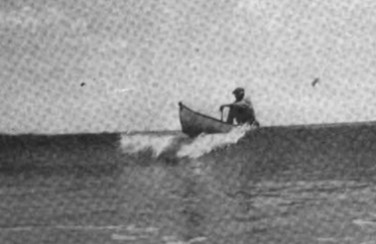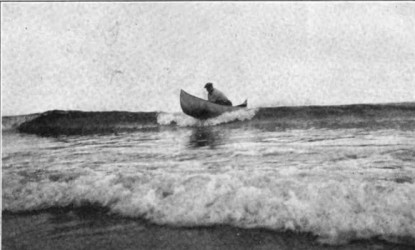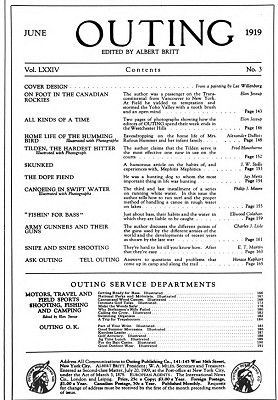
surfresearch.com.au
phil h. moore : canoeing in the surf, 1919
phil h. moore : canoeing in the surf, 1919
|
|
|
|
|
|
 |
surfresearch.com.au
phil h. moore : canoeing in the surf, 1919 |
 |
Going out through the surf. |
 |
The author was an instant late in meeting the third wave, and just missed getting caught in the curl. |
 |
Coming in through the surf. |
 |
As the wave gathered size and momentum, the speed increased, but it was still easy to keep the canoe headed straight for the beach as the wave had a firm grip on the heavy forward end. |
 |
As the wave broke the heavy forward end began to tip down and the speed increased to its |
 |
Outing Editor: Albert Britt Outing Publishing Company, New York, Chicago Volume 74 Number 3, June 1919. Hathi Trust https://hdl.handle.net/2027/hvd.hnfgv6 |
 |
|
|
|
|
|
|